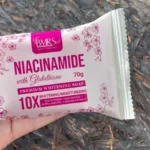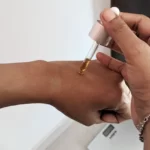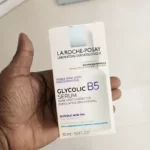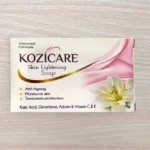Now Reading: Can You Use Kojic Acid & Niacinamide Together?
-
01
Can You Use Kojic Acid & Niacinamide Together?
Can You Use Kojic Acid & Niacinamide Together?

This post may contain affiliate links. Please read our full disclosure here.
Kojic acid and niacinamide are two of the most talked-about ingredients in modern skincare. Both can improve skin tone and texture, but they work in different ways. Kojic acid primarily targets dark spots and discoloration, while niacinamide strengthens the skin barrier and calms irritation. Many people wonder if it’s safe—and worthwhile—to combine the two. The short answer is yes, but you’ll get the best results if you use them correctly.
How Do Niacinamide and Kojic Acid Work?
- Niacinamide (Vitamin B3): This multitasking ingredient does far more than just hydrate. It reinforces the skin’s protective barrier, reduces redness and inflammation, minimizes pores, and smooths fine lines. Niacinamide also interrupts melanin transfer to skin cells, which makes it effective at fading hyperpigmentation over time.
- Kojic Acid: Sourced from certain fungi, kojic acid is best known as a tyrosinase inhibitor, which means it blocks melanin production at its root. By slowing down this process, it helps fade stubborn dark spots, sun damage, and age spots. Kojic acid also provides antioxidant protection, shielding the skin against free radicals and environmental stressors.
Can You Use Them Together?
Yes, and in fact, using them together can give better results than using either ingredient alone. Niacinamide calms the skin and offsets the irritation that kojic acid sometimes causes. Meanwhile, kojic acid offers a stronger lightening effect for pigmentation. When layered properly, they work in harmony to brighten skin tone, reduce uneven patches, and improve overall texture.
Important Considerations
- Concentration Matters: If you’re just starting, use lower concentrations. Niacinamide works well at 2–5%, while kojic acid is most effective and safe at 1–2%. Stronger formulas may increase the risk of irritation.
- Patch Test First: Always test new products on a small area of skin before applying them to your entire face. If you have sensitive skin, introduce one ingredient at a time, then combine once you know your skin tolerates both.
- Sun Protection Is Non-Negotiable: Kojic acid makes your skin more sensitive to sunlight. Niacinamide may also increase this sensitivity slightly. Always wear a broad-spectrum SPF 30 or higher during the day to protect your results and prevent further pigmentation.
- Skin Type Awareness: Oily and acne-prone skin types often benefit from niacinamide’s oil-regulating effects, while dry or sensitive skin types should go slow with kojic acid to avoid dryness or irritation.
Product Recommendations
Look for serums or creams that combine both niacinamide and kojic acid in balanced concentrations. Pairing them in one formula saves time and ensures compatibility. Reputable skincare brands usually formulate these blends with soothing agents like hyaluronic acid, allantoin, or licorice root extract to further minimize irritation.
If you prefer to layer products separately, apply niacinamide first to strengthen the barrier, then follow with kojic acid. Finish with a moisturizer and sunscreen.
How to Use Them in a Routine
- Start with clean, dry skin.
- Apply niacinamide (serum or toner) to calm and prep the skin.
- Follow with kojic acid (serum or cream) to target pigmentation.
- Seal with a moisturizer.
- Finish with sunscreen during the day—this step is essential.
You can use the pair once a day at first, then build up to twice daily if your skin tolerates it.
Takeaway
Kojic acid and niacinamide make a powerful duo for achieving a brighter, more even skin tone. Niacinamide strengthens and soothes, while kojic acid fades discoloration. Together, they can help address pigmentation, dullness, and texture—provided you use them in the right concentrations and protect your skin with sunscreen. With patience and consistent use, you can expect clearer, healthier-looking skin.













